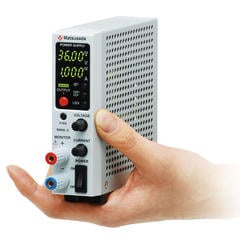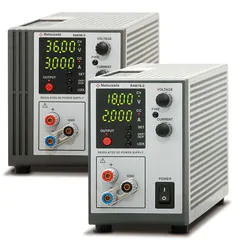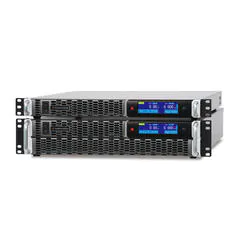Many new employees in Japan will join the company in April. Accidents and injuries caused by a lack of knowledge and experience tend to occur during this period. This time, we will introduce what new employees should be aware of when conducting electrical experiments and circuit evaluations in the workplace.
What to Do Before Using the Power Supply
There are several types of power supplies. So, you have to choose the right power supply for what you are going to do. It does not mean that the power supply should be properly selected and connected.
The following are typical power supply types.
| Power supply type | Power supply features | |
|---|---|---|
100 Vac (AC)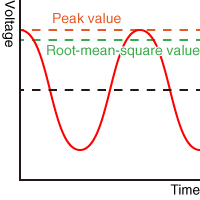
The voltage changes at a certain cycle.
|
AC power supply | A power supply that outputs AC, such as a commercial power supply. |
12 Vdc (DC)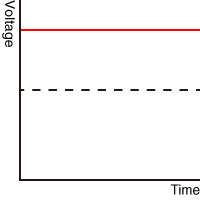
The voltage is always constant.
|
DC power supply | A power source that outputs direct current, including primary batteries and rechargeable batteries. |
| Switching power supply | Power supply that converts commercial power supply to direct current with a switching circuit, etc. | |
| Series power supply | One of the linear power supplies that converts commercial power to direct current with a series regulator. | |
| Reference power supply | Power supply that outputs a constant voltage regardless of power supply voltage, temperature, element variation, etc. | |
It is very important to check whether the equipment operates on direct current or alternating current. Connecting a device that operates on an AC power supply to a DC power supply, or vice versa, may damage the device or power supply. Even if a DC power supply is required, it is not recommended to use it near heat-sensitive equipment because the series power supply is a linear power supply and generates heat. On the other hand, switching power supplies can suppress heat generation, but they generate a lot of noise, so you should avoid connecting devices that may malfunction due to noise. For details, refer to the "Method of Generating Direct Current (DC) Power".
In addition, if the equipment is vulnerable to voltage fluctuations or if a stable power supply is required for measurement, it is necessary to use a reference power supply. In fact, a reference power supply is also used for the switching power supply to stabilize the output voltage.
After choosing the right power supply type, you need to check the operating range. It is problematic to connect a device operating at 12 V to a power supply with an output voltage of 120-240 V. You have to make sure that the output range of the power supply includes the voltage and current you want to use. Of course, if the output is too large, it will lead to damage to the equipment. Even if it actually works, the resolution for performing performance measurements may be insufficient.
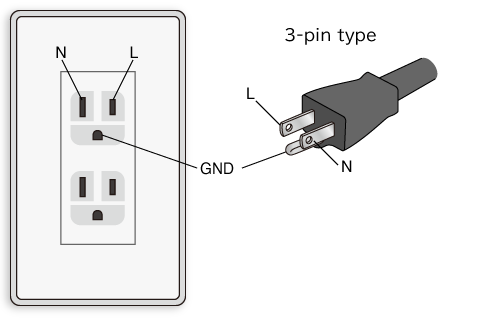
The Ground (GND) terminal has a function of electric shock prevention and electrostatic countermeasure. It can also help reduce noise.
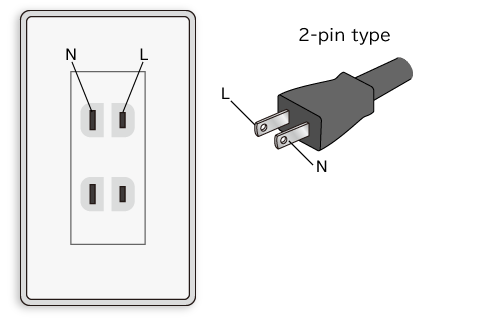
For electrical outlets without a Ground (GND) terminal, it is desirable to provide Ground (GND) separately.
On top of that, you don't just have to be careful about the power supply. It is also important to check the load to connect. Check that the load characteristics of the connected load such as resistive load, inductive load, capacitive load, and LED match the purpose.
If you pay attention to the above, it is okay to select the equipment. After that, the wiring is connected, but if a high voltage or current is applied, the capacity of the wiring material may be insufficient. If there is not enough capacity, the wiring will generate heat and measurement will not be performed correctly. In addition, the insulation of the wiring may meltdown, and in the worst case, it may catch fire. Try to use an electric wire that matches the current and voltage.
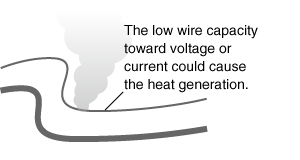
The heat generation due to the lacking wire capacity may result in a fire.
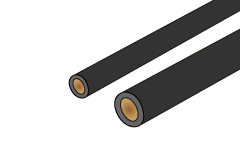
Use suitable wires to current and voltage.
Then, when connecting, check the polarity. Some light bulbs that are connected are not related to polarity, such as small light bulbs used in science experiments, but diodes and the like will not work if the polarities are connected in reverse. When connecting a large number of circuits, they will not operate properly unless they are connected while checking the polarity of each one.
Then, consider whether to connect the circuit to the ground (GND) or not. By connecting to the ground, the effect of stabilizing the potential difference and the effect of reducing noise are expected. The ground is often used for stationary equipment, but in some cases, it may be a metal frame.
Example of grounding
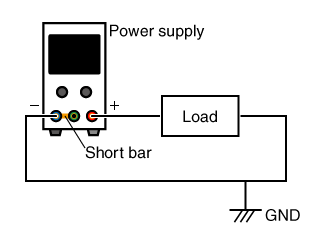
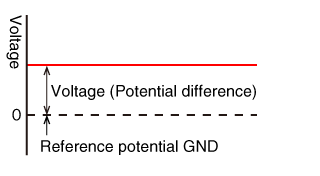
When the short bar is connected, the potential is based on Ground (GND).
Example of independent (floating)
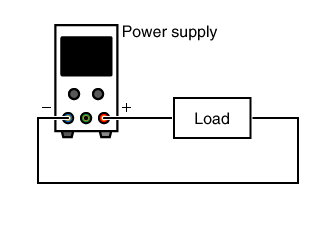
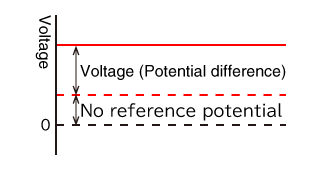
When it is not grounded, the potential is independent (floating).
Improvement of Working Environment
Next, let's introduce some things to be aware of other than preparing the equipment. You probably won't be dealing only with low-voltage equipment. When handling high-voltage equipment, you need to be careful about the working environment. First, don't put anything other than what you need in your workspace. It can cause mistakes, and if the equipment is cluttered in the workspace, work efficiency will be reduced. Also, as explained earlier, if the voltage is too high, it may catch fire. If the flammable substance is left in the workspace at this time, it will be a fire. Even if it does not cause a fire, if the insulating film melts down, there is a risk of electric leakage and electric shock caused by it. Therefore, in order to prevent electric leakage and electric shock, it is necessary to organize the working environment and work on insulating and flame-retardant materials.
It is even better to consider fire prevention just in case. Fires related to electrical equipment include fire by re-energization. A fire by re-energization occurs when an electric device is energized. It is generally known that there was a power outage at the time of the earthquake, but when the power was restored, the collapsed electric stove ignited the combustibles in the vicinity. (see "Fire by Re-Energization Countermeasures" by the Fire and Disaster Management Agency: FDMA, This link is a Japanese PDF file.) Be careful in the workspace, especially when the equipment is in contact with a flammable substance. There is also a risk of electric leakage if the workspace is wet.
In addition, various precautions are required for electric fires. It can also be caused by a tracking that occurs when a dusty plug is energized while it is left plugged into an electrical outlet, or an electrical short circuit due to wiring that is not properly insulated.
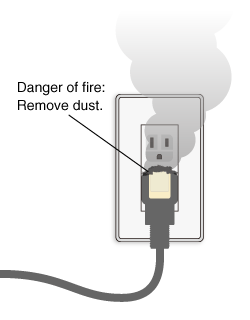
If a fire breaks out, use a fire extinguisher (powder fire extinguisher) instead of sprinkling water. Water can be used after the power is completely turned off, but if water is applied while the power is on, electricity will flow through the water, and there is a risk of electric shock. In order to prevent electric fires,
the FDMA has prepared to learn contents such as "Electricity or reoccurrence factor learning contents (https://www.fdma.go.jp/relocation/e-college/ippan/cat1/cat7/post-343.html)", so it is also a good idea to study here.
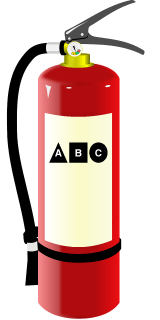
- A: Ordinary combustibles
- A shows Class A fires involve ordinary combustibles such as wood, cloth, paper, textiles, and plastics.
- B: Flammable liquids
- B shows Class B fires involve flammable liquids such as grease, gasoline, oils, solvents, and oil-based paint.
- C: Electrical equipment
- C shows Class C fires involve electrical equipment, such as motors, computers, and fax machines.
Precautions When Energizing
Don't forget to check the operation in advance before turning on the power switch of the power supply. Unless you are working alone, if you are working with multiple members, there may be parts that are working at the wiring destination or short-circuited. Therefore, in order to prevent accidents, it is necessary to check the whole and check the operation before connecting the load. Also, if you connect a power supply that has not been used for many years instead of the power supply that you normally use, you need to check in advance whether the behavior of the power supply is appropriate. Due to the deterioration of the power supply, the rated output may not be output, or a ripple may occur due to improper rectification. In addition, unexpected voltage fluctuations and frequency fluctuations may occur, so make sure that they do not occur. For details, refer to the "AC Power Supply: Fundamentals and International Differences".
Now that the power supply has been checked and all the safety item lists in the workplace have been cleared, the power output switch is finally turned on. However, there are some items to check before the operation. For example, check the setting of voltage and current. If the voltage and current settings remain large, a high voltage will suddenly be applied to the connected device. Although it depends on the content of the experiment, it is recommended to first narrow down the voltage and current and gradually increase it. How can we raise the voltage and current gradually and safely? For this, it is recommended to refer to the charging method introduced in "Battery Types and Characteristics of Charge Control".
There is CC control that gradually raises the voltage while constantly flowing a constant current, and CV control that increases the current while a constant voltage is applied. There is also CV/CC control that operates in a combination of both. CV/CC requires fine control, but it is very useful as a method for supplying stable power.
Other Things to Be Aware of
Even so, experiments can damage the equipment and load. To prevent this, it is necessary to devise so that unexpected voltage is not applied, or if electricity is applied, the wiring can be cut so that electricity does not flow momentarily.
For example, insert a limiting resistor to prevent the current flowing through the LED from exceeding the maximum current value of the chip. When operating with a 12 V in-vehicle battery, if two 5 V LEDs are used in series, the required voltage is 10 V, which is over 2 V. In this case, insert a limiting resistor corresponding to this over 2 V (or higher).
The resistance value of the limiting resistor is given by the following equation.
Resistance Value = Voltage ÷ Current
Therefore, prepare resistors with different resistance values according to the current that flows. There is also a method of controlling the voltage using a diode (Zener diode). In addition, by combining a fuse that blows the built-in alloy parts when a current exceeding the rating flows, both current and voltage can be controlled.
Related Technical Articles
Recommended products
Matsusada Precision's high-performance power supplies



